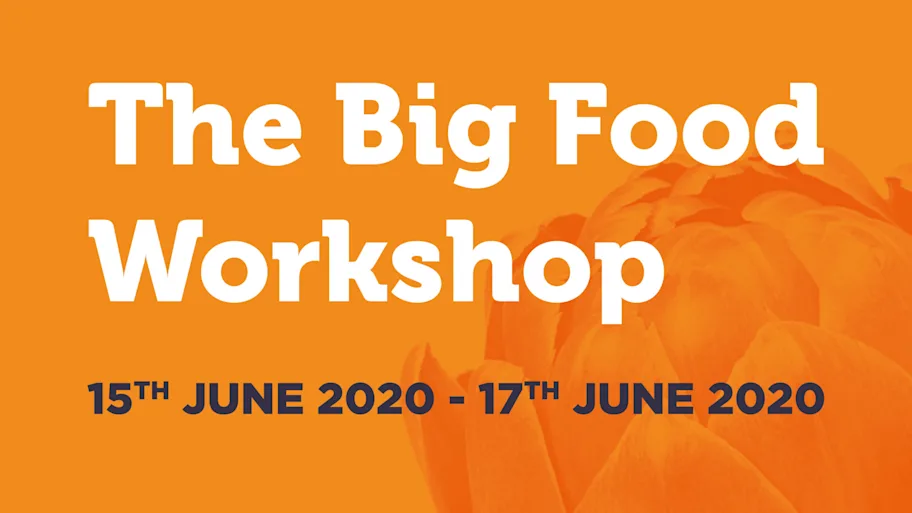
- Science News
- Featured news
- Food behaviors changed a lot during the Covid-19 pandemic. Our study reveals what happened
Food behaviors changed a lot during the Covid-19 pandemic. Our study reveals what happened
By Jeremy Millard, Alberto Sturla, Zdeňka Smutná, Barbora Duží, Meike Janssen, and Jan Vávra

Image: eldar nurkovic/Shutterstock.com
Jeremy Millard is the director of the non-profit Third Millennium Governance consultancy in Denmark. He is a social scientist and geographer currently working on governance models for the new era of uncertainty and crises, especially for city-region systems in the context of the Sustainable Development Goals. Millard and his co-authors Alberto Sturla, Zdeňka Smutná, Barbora Duží, Meike Janssen, and Jan Vávra write about how our food behaviors have changed during Covid-19, and how those behaviors depend on where we live and who we are.
Food is central to our existence, not just for sustenance and survival but as a major contributor to our cultural, social, and economic lives. The food industry also has huge environmental impacts.
So, what happens to patterns of food purchasing, preparation, consumption, and diet when food systems are disrupted by widespread lockdowns, closures, and bottlenecks during a global crisis like Covid-19? Our research, published in Frontiers in Sustainable Food Systems, showed that the majority of European households significantly changed important aspects of their food behavior, including both more ready-made meals and food from local shops.
Drawing on comprehensive survey data from 7,368 European households, we have found many significant differences in these behaviors depending both on the type of region in which the household resides and on its socio-economic characteristics.
The survey included questions on where and how people shop for their food both before and during Covid-19, the types of food eaten, how their food is prepared, where they eat, the amount of food eaten, and the money spent. Other questions covered reliance on food banks and free food, growing own food and stocking-up on food. Food awareness, whether meals were missed and other aspects of food anxiety, diet and health were also covered.
Small metropolitan cities are more resilient
An important geographical observation is the strong tendency for more or less sequential changes in food behavior outwards from a country’s capital city center to its rural periphery. This is defined by Eurostat, the EU’s statistical agency, as being down the metropolitan hierarchy and along the urban-rural continuum. These changes are directly related to decreasing population density and distinctive socio-economic profiles.
Using Eurostat’s standard regional typologies, the current stage of Europe’s urbanization process shows an important counter trend in population growth and decline from the center to the periphery. There is movement of population out of both the largest, typically capital, metropolitan areas and from the so-called second-tier, typically older industrial, metro cities towards smaller metros in or beyond the suburbs and in adjacent rural areas. These smaller metros are also growing because of rural depopulation as they represent more desirable destinations than the larger metros with higher rents and living expenses.
These newer, smaller but growing metros tend to be the most socio-economically vibrant. Compared to all other regional types, their populations show the greatest egalitarian and cohesive profiles in terms of income, age, education, and family size, as well as the lowest proportion of households that lost income during the pandemic. Across nearly all types of food behavior, these smaller metros directly reflect this regional geography by displaying many of the advantages of capital metros while foregoing some of the disadvantages. Capitals typically exhibit pockets of poverty alongside very wealthy households, while second-tier metros are more likely to be characterized by the lowest metro incomes as former industrial areas that have been left behind economically with relatively high unemployment, poverty, and social exclusion.
This overall dynamic is being driven by a better quality of life in smaller metros that are able to retain good connectivity to the larger metros as well as balance urban and rural advantages with high service levels. Their relative lack of physical connectivity compared to the larger metros has been decisively countered by the dramatically increased use of digital technology during the pandemic, including very strong take-up of online shopping and teleworking.
For example, smaller metros typically change their food behavior significantly less than all other regional types during Covid-19, showing them to be the most resilient to the pandemic’s disruptions. They also exhibit much smaller food behavior differences between households that lost income during the pandemic and those that did not. This means that their overall food vulnerability is much lower.
How this and many other impacts will play out over the longer term is a critical issue and needs focused research and policy action, especially because the likelihood of other shocks in future with similar effects is high.
Dr Jeremy Millard et al.
Low income
Laying on top of these very clear regional differences are the highly significant food behavior differences between households that lost income during the pandemic and those that did not. This distinction is a good surrogate for household income which is otherwise difficult to measure comparatively in a household survey. Income-loss households during Covid-19 were likely to be fragile even before the pandemic which then made their situation worse. They nearly always experienced food behavior changes arising from Covid-19 much more than no-income-loss households.
On the other hand, income-loss-households are more likely to state that some changes they have made, and perhaps forced to make, during Covid-19 are more likely to continue post-pandemic. For example, greater increases in shopping with local producers and in more local shops, growing own food, and using a wider range of food dishes and recipes. Thus, a useful policy would be to put in place measures to support the positive food behavioral changes of all households with specific focus on those with lower incomes.
What the future holds
How this and many other impacts will play out over the longer term is a critical issue and needs focused research and policy action, especially because the likelihood of other shocks in future with similar effects is high. These could include new pandemics, the ongoing and increasingly alarming climate crisis, new disruptive technologies, geopolitical and economic-trade tensions, etc. The early 2022 Russian invasion of Ukraine and the growing disruption of both energy and food systems is but the latest example.
Overall, we have demonstrated often quite stark food behavior inequalities between population groups in all types of region, as well as distinctive differences between regions themselves. For example, there are significant trends to less healthy eating during the pandemic away from fresh food to more processed and sugary foods and alcohol. This is likely due to increased stress and snacking whilst at home during lockdown seen strongest in income-loss households whose vulnerability has been further exposed.
These differences existed before Covid-19, but the system shock has further exacerbated them. On the positive side, however, the pandemic has also dramatically accelerated the previous slow trend towards more local and seasonal food delivered along shortened supply chains, a move to smaller independent shops, and much greater food awareness and interest in trying new types of food and recipes.
The study has clearly shown that the food system is multidimensional, that both social determinants and geography strongly affect food behaviors, and that there is a highly significant alignment and interaction between geography and society. In times of food system disruption during a crisis, both appear to be exerting increasing influence over a market system based largely on large centralized organizations, long supply chains and ever-increasing globalization.

Dr Jeremy Millard. Image: Jeremy Millard
Jeremy Millard (Director of the non-profit Third Millennium Governance consultancy in Denmark). He is a social scientist and geographer currently working on governance models for the new era of uncertainty and crises, especially for city-region systems in the context of the Sustainable Development Goals. Alberto Sturla (Council for Agricultural Research and Economics in Italy) is an agricultural economist whose main research interests are focused on territorial approaches to sustainable agriculture and their consequences for the local socio-economic context. Zdeňka Smutná (Jan Evangelista Purkyně University in Ústí nad Labem, Czechia) is PhD student and researcher focusing mainly on alternative food networks and rural development. Barbora Duží (Institute of Geonics of the Czech Academy of Sciences) is a social researcher focusing on societal and geographical aspects of food systems and urban agriculture. Meike Janssen (Copenhagen Business School, Denmark) is a consumer researcher working on sustainable food consumption and behavior change. Jan Vávra (Institute of Sociology of the Czech Academy of Sciences) is an environmental sociologist nowadays mostly dealing with the social and environmental context of informal food production in the home, on allotments and in community gardens.






